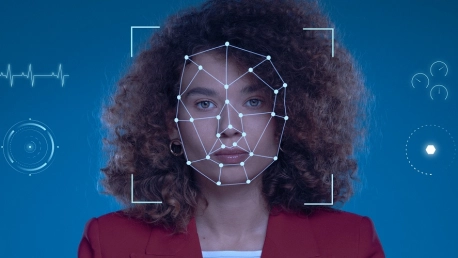Amazon’s latest offering, Rekognition, makes it easier to use image and video analysis technology through its revolutionary APIs. From government facial recognition security to the ability to create visual libraries, Rekognition has dozens of use cases and its ease of use is a differentiating factor in the market. Like any machine learning application, there are a number of concerns that need to be addressed in the use of this technology, and the implications of how it can be distorted and misused need to be taken into account, as well.
Here’s a look at Amazon’s latest offering, Rekognition.
What is Amazon Rekognition
Amazon Rekognition is a cloud-based Software as a Service (SaaS) tool, that provides easy image and video analysis. Enhancing computer vision capabilities, it removes the need for deep learning technology and eliminates machine learning expertise. The API is a plug-and-play tool that works alongside Amazon Simple Storage Service (S3) where image and video files stored in S3 are quickly analyzed.
The API boasts features that enable the detection of objects, text, and unsafe content and can be used for facial recognition purposes. The facial recognition API goes one step further to include detection, analysis, and comparison of faces which can be used across a variety of industries for security verification, issues of public safety, head counting, and more.
Amazon Rekognition is developed by Amazon’s computer vision scientists, who have leveraged deep learning technology in efforts to analyze billions of datasets in the form of images and videos. Rekognition is regularly updated, enhancing the product with new labels and features.
Amazon Rekognition Use Cases
With Amazon’s powerful computer vision technology packaged in the form of easy-to-use APIs, there are multiple use cases for the tool. Here are some of the most popular uses of the Rekognition Image API:
- Searchable Image Library
- Face-Based User Verification
- Sentiment Analysis
- Facial Recognition
- Image Moderation
The video API has been beneficial for archivists, allowing for search indexes to be created and enabling a simple filtering mechanism of explicit content.
Benefits of Using Amazon Rekognition
The world of computer vision can be complex, involving large data sets, machine learning expertise, and deep learning algorithms. Rekognition API makes it possible (and effortless) to incorporate image and video analysis into apps. Rekognition can be integrated into any smartphone, web app, or computer framework.
Rekognition leverages powerful deep-learning technology to analyze images and videos; this involves finding, comparing, and recognizing faces, as well as objects and scenes in image and video files.
Amazon Rekognition offers users a scalable approach to image analysis. One of the biggest challenges with this technology is that it’s time-consuming, making it difficult to scale. With Rekognition it’s possible to analyze, curate, and arrange millions of images, quickly and easily.
Finally, Rekognition beats the competition when it comes to saving you money. With zero minimum fees, free initial use, and tiered pricing packages, Amazon has one of the most competitive APIs available. With the added option to pay-as-you-go, users only pay for the photos and videos they analyze, and any facial metadata stored within Rekognition.
How Does it Work?
Amazon Rekognition boasts two powerful APIs in the form of Rekognition Image and Rekognition Video. Both have the capacity to analyze and process images and videos, extracting information from the files; such as what objects are present in an image, or whether a video contains explicit content.
Rekognition Image can quickly identify real-world objects when a picture is uploaded, as well as faces. This enables users to query photo archives with respect to objects or faces, based on images stored on Rekognition. More sophisticated searches are also possible, with users being able to search for smiling faces or people with a particular expression (smiling, crying, etc.). Deep learning image recognition is simple to use with the Amazon Rekognition API. RecognizeCelebrities, for example, returns details for up to 100 celebrities included in a picture. This provides details of where celebrity faces can be seen in the picture and how to find out more about the person in question. The following material includes an outline of Amazon Rekognition Image and Amazon Rekognition Video activities and the types of research that Amazon Rekognition provides. The distinction between non-storage and storage operations is often discussed.
Amazon Rekognition and Bias
As facial recognition systems become more common, Amazon has emerged as a frontrunner in the field, courting customers around the US, including police departments and Immigration and Customs Enforcement (ICE). But experts say the company is not doing enough to allay fears about bias in its algorithms, particularly when it comes to performance on faces with darker skin.
The latest cause for concern is a study published this week by the MIT Media Lab, which found that Rekognition performed worse when identifying an individual’s gender if they were female or darker-skinned. In tests led by MIT’s Joy Buolamwini, Rekognition made no mistakes when identifying the gender of lighter-skinned men, but it mistook women for men 19 percent of the time and mistook darker-skinned women for men 31 percent of the time.
The study follows research Buolamwini conducted last February, which identified similar racial and gender biases in facial analysis software built by Microsoft, IBM, and Chinese firm Megvii. Shortly after Buolamwini shared her results, Microsoft and IBM both said they would improve their software. And, as this latest study found, they did just that.
Since last February, a number of tech companies have voiced concern about the problems with facial recognition. As bias in algorithms is often the result of biased training data, IBM published a curated dataset it said would boost accuracy. Microsoft has gone even further, calling for regulation of the technology to ensure higher standards so that the market does not become a “race to the bottom.”
Amazon, by comparison, has done little to engage with this debate. The company also denied that this recent research suggested anything about the accuracy of its technology. It noted that the researchers had not tested the latest version of Rekognition, and the gender identification test was facial analysis (which spots expressions and characteristics like facial hair), not facial identification (which matches scanned faces to mugshots).
These are two separated software packages, says Amazon. “It’s not possible to draw a conclusion on the accuracy of facial recognition for any use case — including law enforcement — based on results obtained using facial analysis,” Matt Wood, general manager of deep learning and AI at Amazon Web Services, said in a press statement.
Nevertheless, earlier research has found similar problems in Amazon’s facial identification software. A test last year conducted by the ACLU found that while scanning pictures of members of Congress, Rekognition falsely matched 28 individuals with police mugshots. Amazon blamed the results on the poor calibration of the algorithm. Although bias in facial recognition systems has become a rallying point for experts and researchers who are worried about algorithmic fairness, many warn that it shouldn’t overshadow broader issues. As Buolamwini and co-author Inioluwa Deborah Raji note in their recent paper, just because a facial recognition system performs equally well on different skin colors, that doesn’t stop it from being a tool of injustice or suppression. The pair writes: “The potential for weaponization and abuse of facial analysis technologies cannot be ignored, nor the threats to privacy or breaches of civil liberties diminished even as accuracy disparities decrease.”
Conclusion
Amazon Rekognition hails an interesting development in our evolution of technology tools and software solutions. The two APIs, Rekognition Image and Rekognition Video, enable users to seamlessly identify aspects of image and video files, picking up background objects, facial features, and even expressions.
With dozens of use cases, Amazon Rekognition is popular across a number of industries, boasting benefits like easy integration, efficient use of deep-learning technology, a scalable approach, and cost savings.
Detractors will point out that Rekognition is far from ready for commercial use by law enforcement agencies, citing recent studies coming out of MIT that indicate bias. With struggles in identifying minority groups like women and people of color, particularly darker-skinned women of color, there’s a real fear that groups that are already vulnerable may be further targeted due to this technology.
While Amazon still has a long way to go in rectifying these issues, there’s no doubt that the power of the Rekognition APIs is changing the landscape of visual recognition technology!









